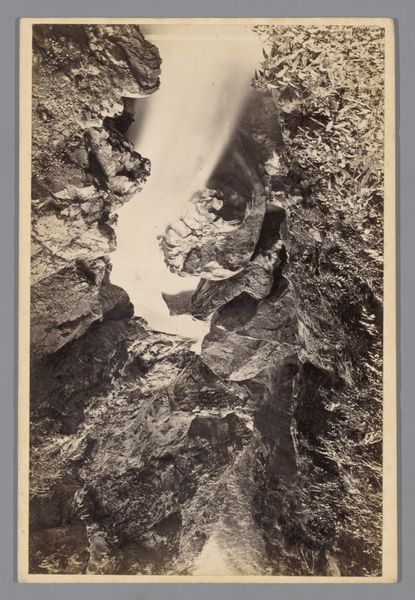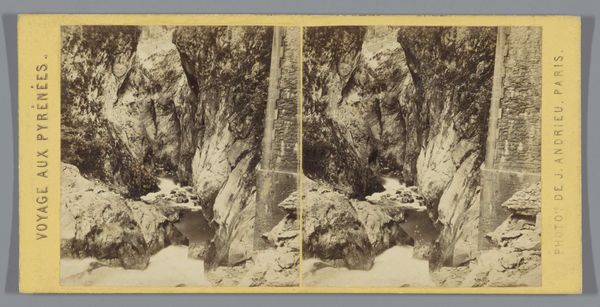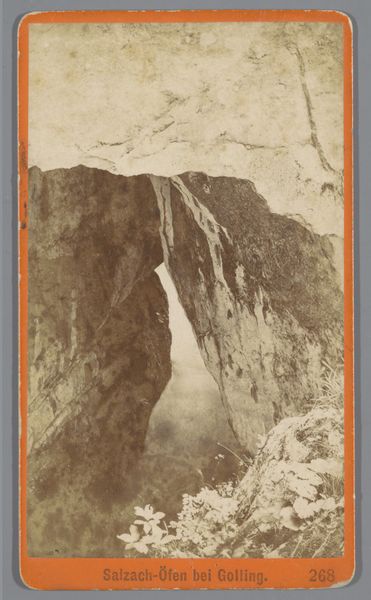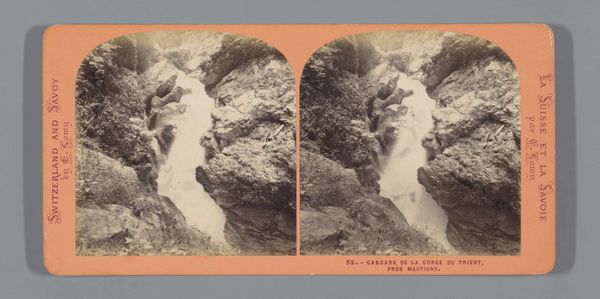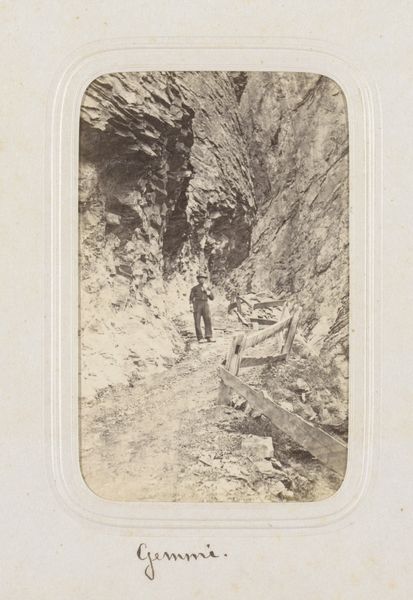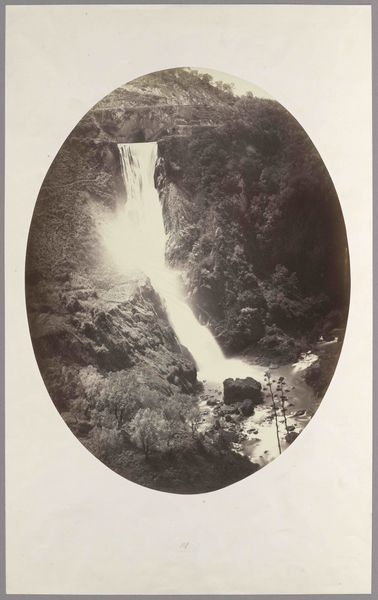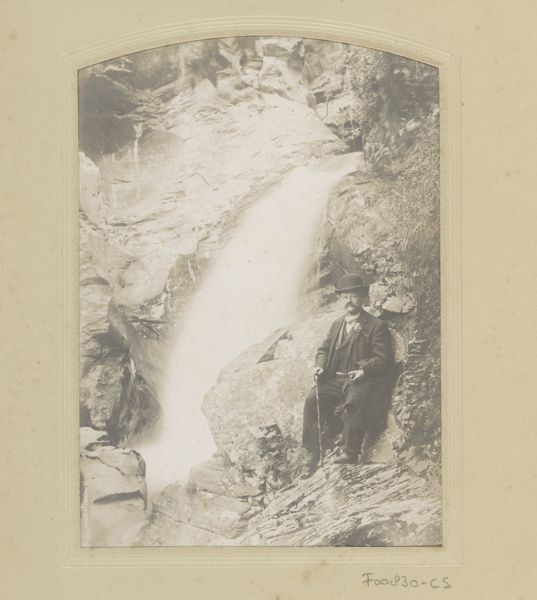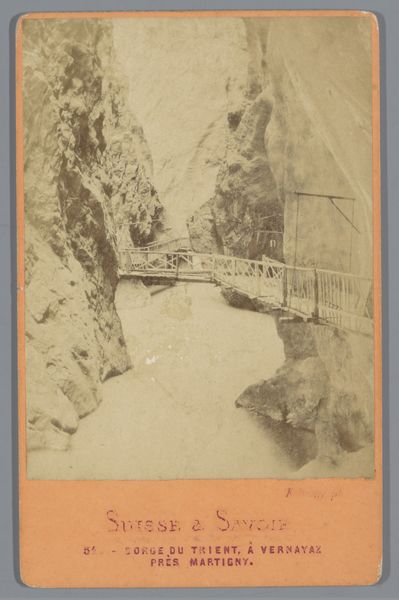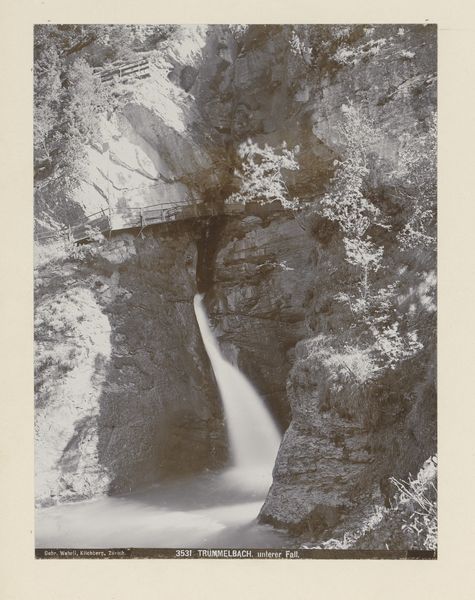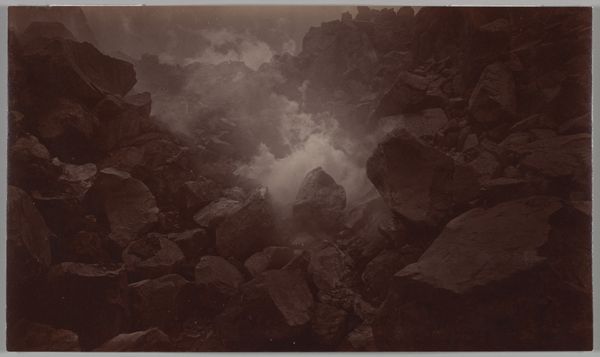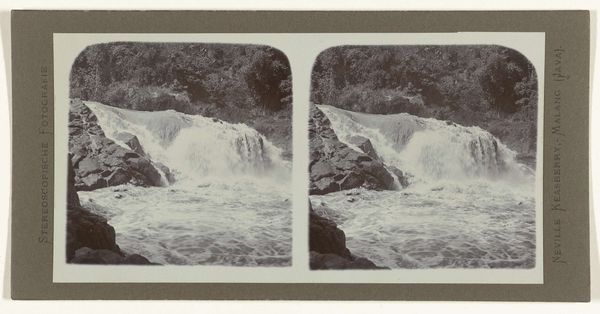
Dimensions: height 55 mm, width 89 mm
Copyright: Rijks Museum: Open Domain
Curator: What a dramatic image! Florentin Charnaux's "Waterval in de Gorge du Trient in Zwitserland," taken around 1871, captures the raw power of nature. The composition draws the eye immediately to the cascading water. Editor: Yes, it has this almost ghostly, ethereal feel. The stark contrast between the dark, craggy rocks and the blurred, almost blinding, rush of water. It’s both captivating and a little unsettling. It feels so Romantic. Curator: Absolutely! This aesthetic aligns with the Romantic movement's fascination with nature's sublime power. Charnaux was working in a period where photography was still finding its feet as both an art form and a document. It evokes both awe and insignificance when we look upon it. Editor: And there’s an intriguing element of control present. Look at the vantage point that Charnaux chose! It makes the chasm seem like a contained performance or spectacle. Also, I wonder, given how difficult the terrain must have been to navigate with early photographic equipment, what statements he intended with his position and composition of this photo? It must have been so much of a challenge. Curator: That sense of staging, of framing nature, speaks to the complex relationship Europeans had with the natural world in the late 19th century. The sublime was being tamed, packaged into consumable experiences like tourism. Also, while seemingly neutral and realistic, remember that images like these bolstered colonial agendas. Dominance and possession go hand in hand, the artistic statement reinforces that through composition. Editor: Right, the narrative of conquering nature. How were photographs such as these displayed, for example, to influence public perception? They obviously influenced artistic choices later on, but how were photographic pieces framed, institutionally and socially? The sepia tones add another layer, like looking at something ancient or a collective memory. Curator: The tones create that sense of history and lend themselves well to reinforcing these social ideologies of grand domination, visually framing the history being presented in terms of those political powers. They could be displayed in homes, or galleries to showcase new photography works... this allowed viewers at the time to encounter such overwhelming scenery without even moving! Editor: So, even in its apparent realism, there’s a complex network of cultural meanings being conveyed. Curator: Precisely! This photograph is both a landscape and a cultural artifact ripe for unpacking its political agendas through understanding social trends and historical artistic choices. Editor: Seeing it now has added a whole new dimension to it for me! Curator: To me as well, I won’t ever see an innocent photograph of rushing water anymore, I will question it.
Comments
No comments
Be the first to comment and join the conversation on the ultimate creative platform.
